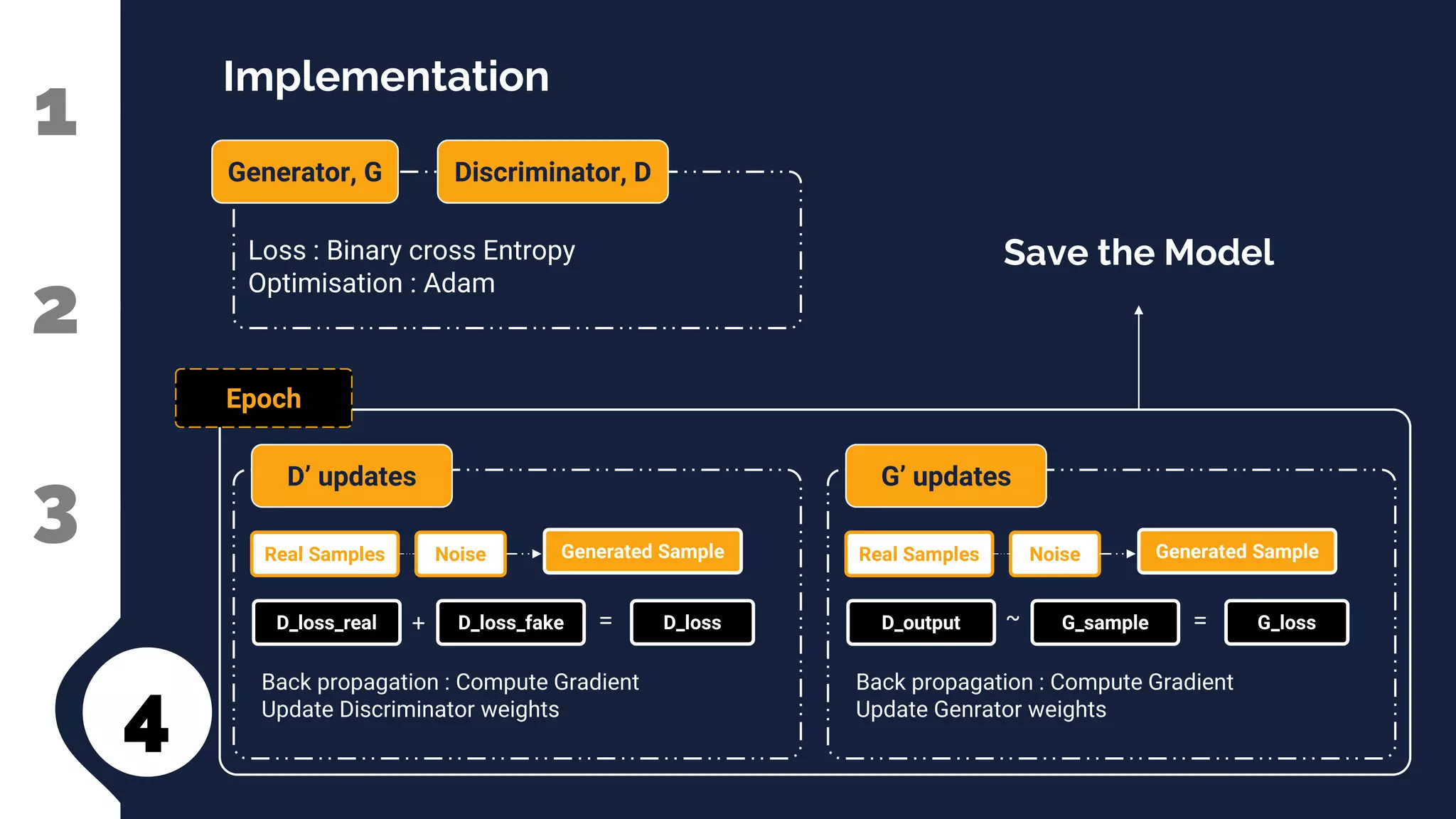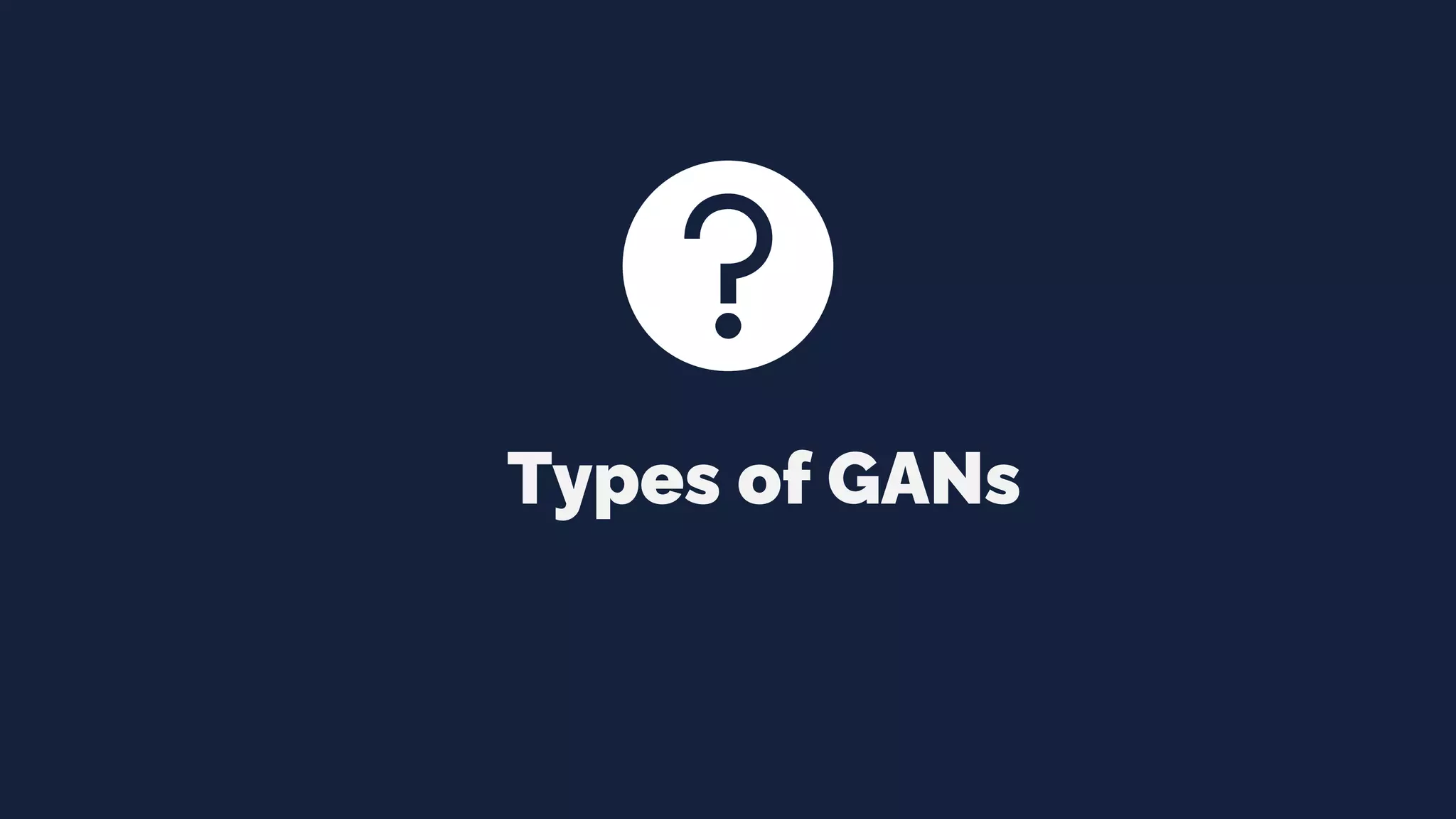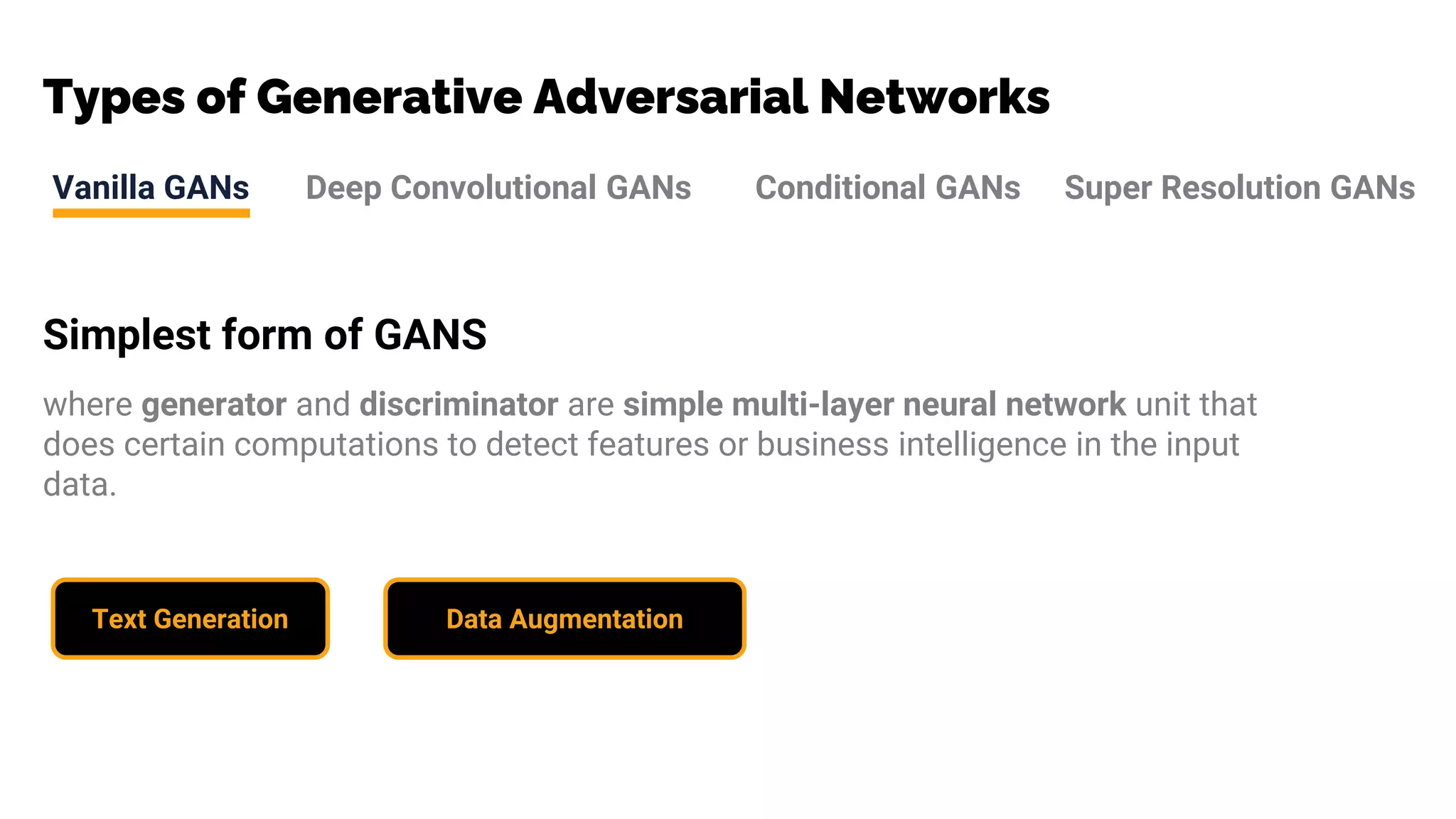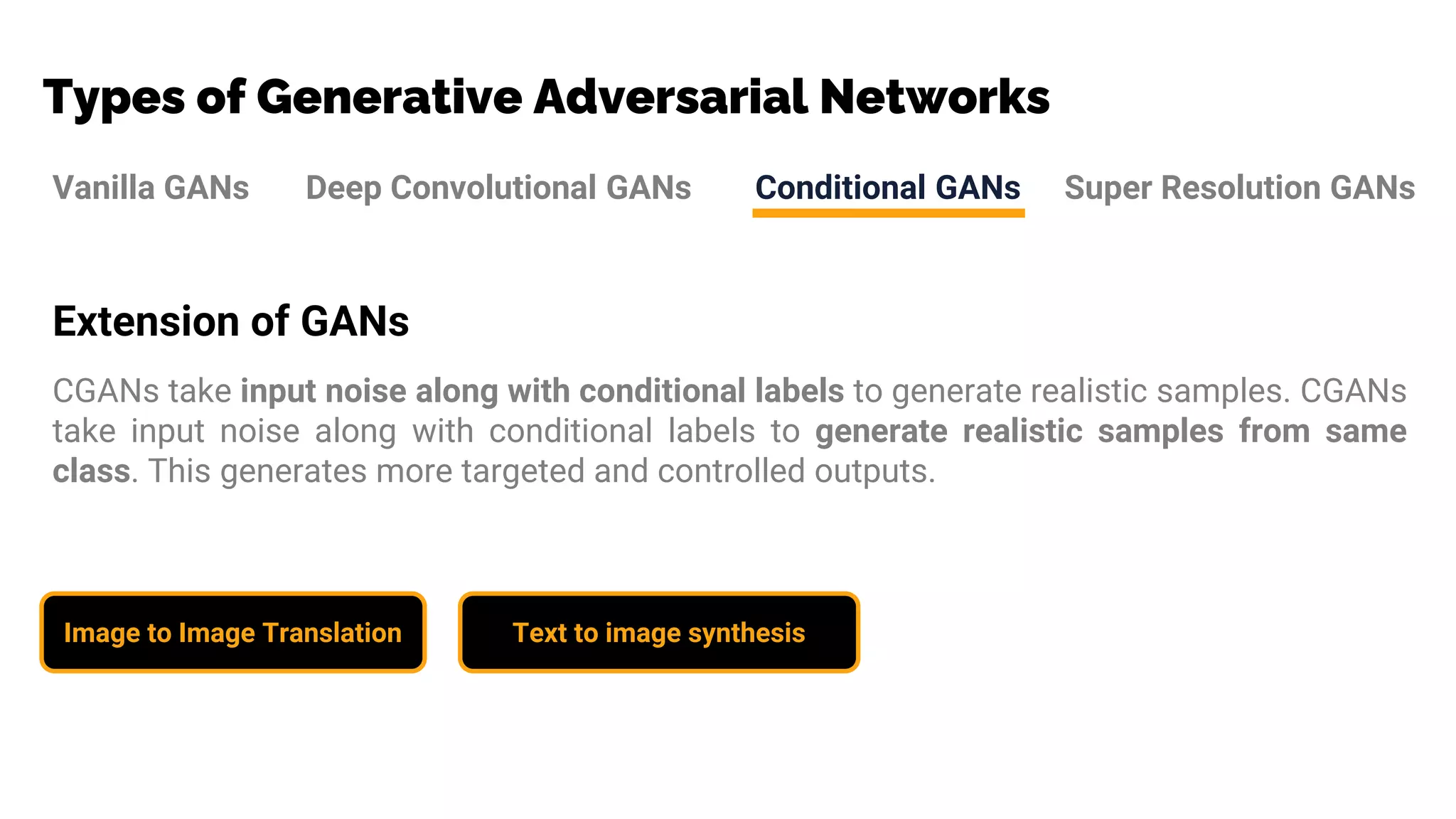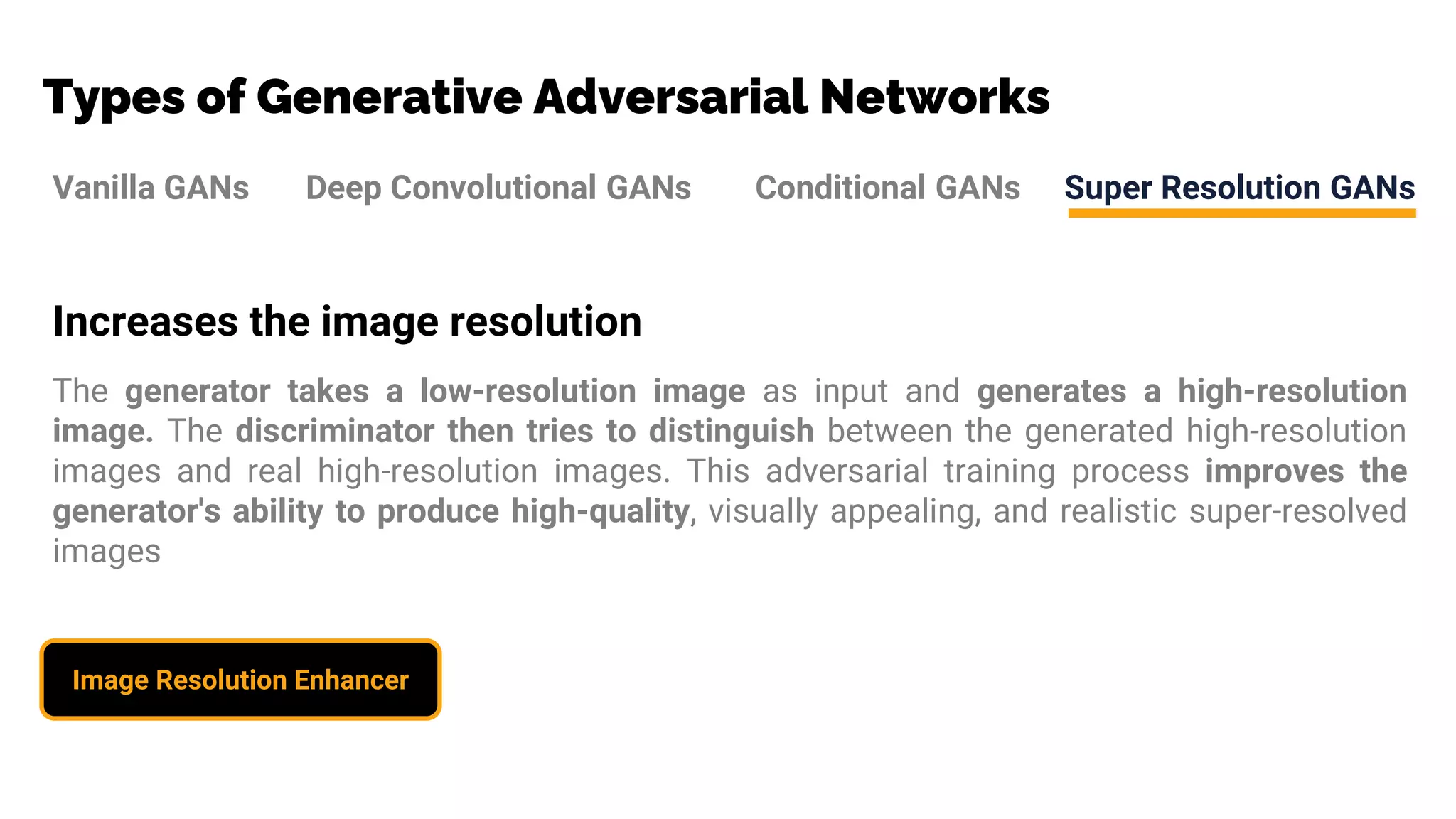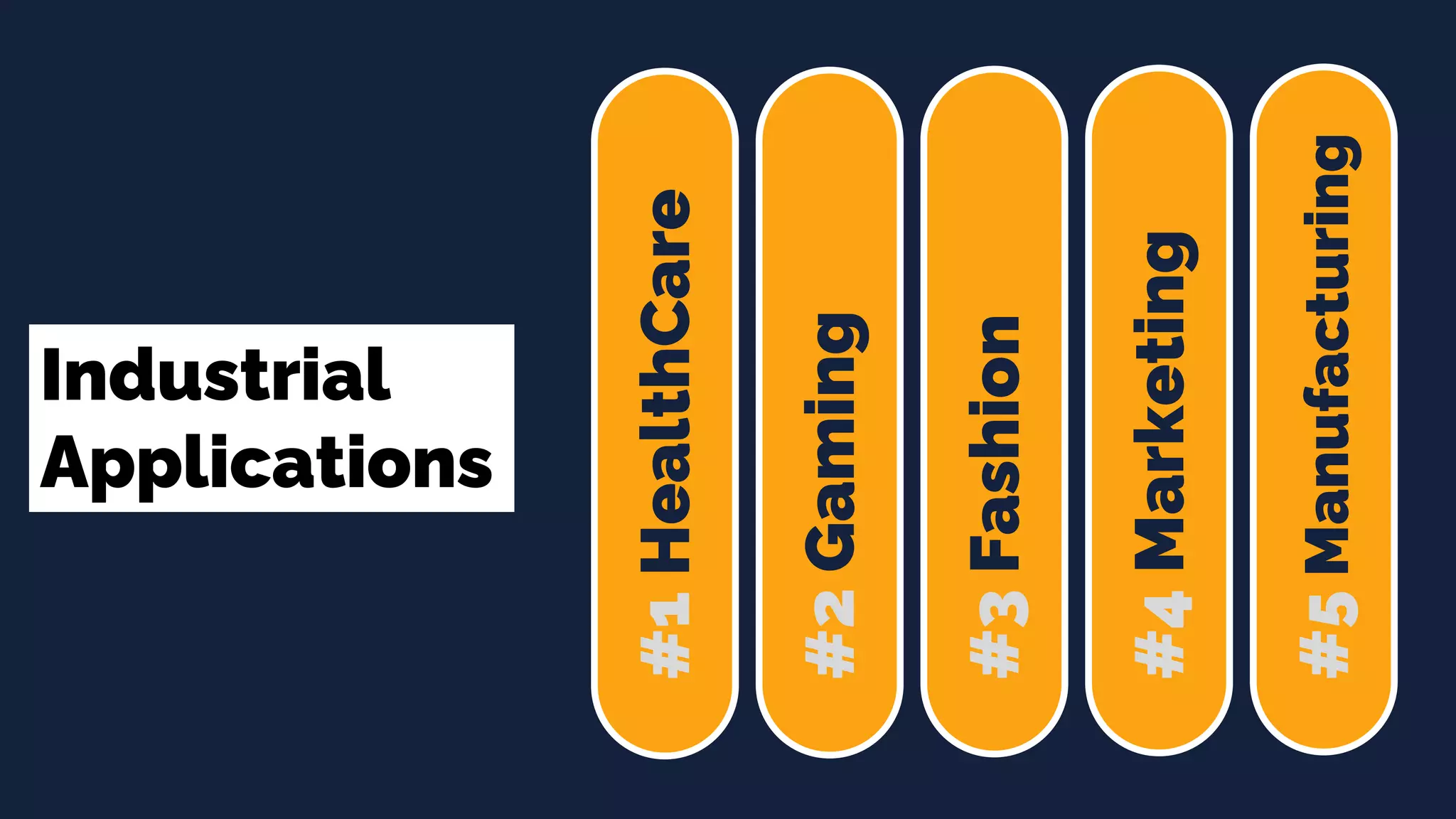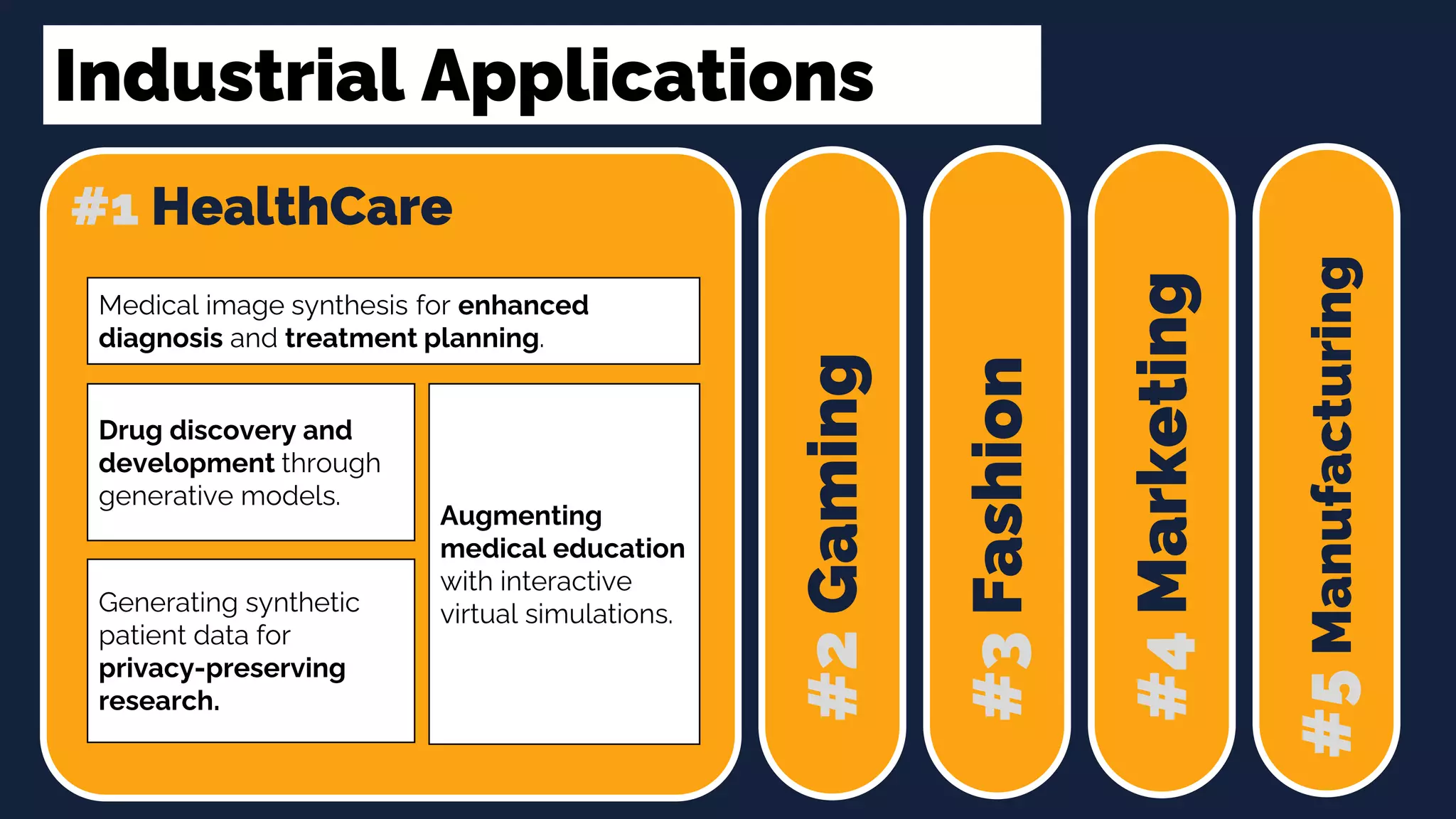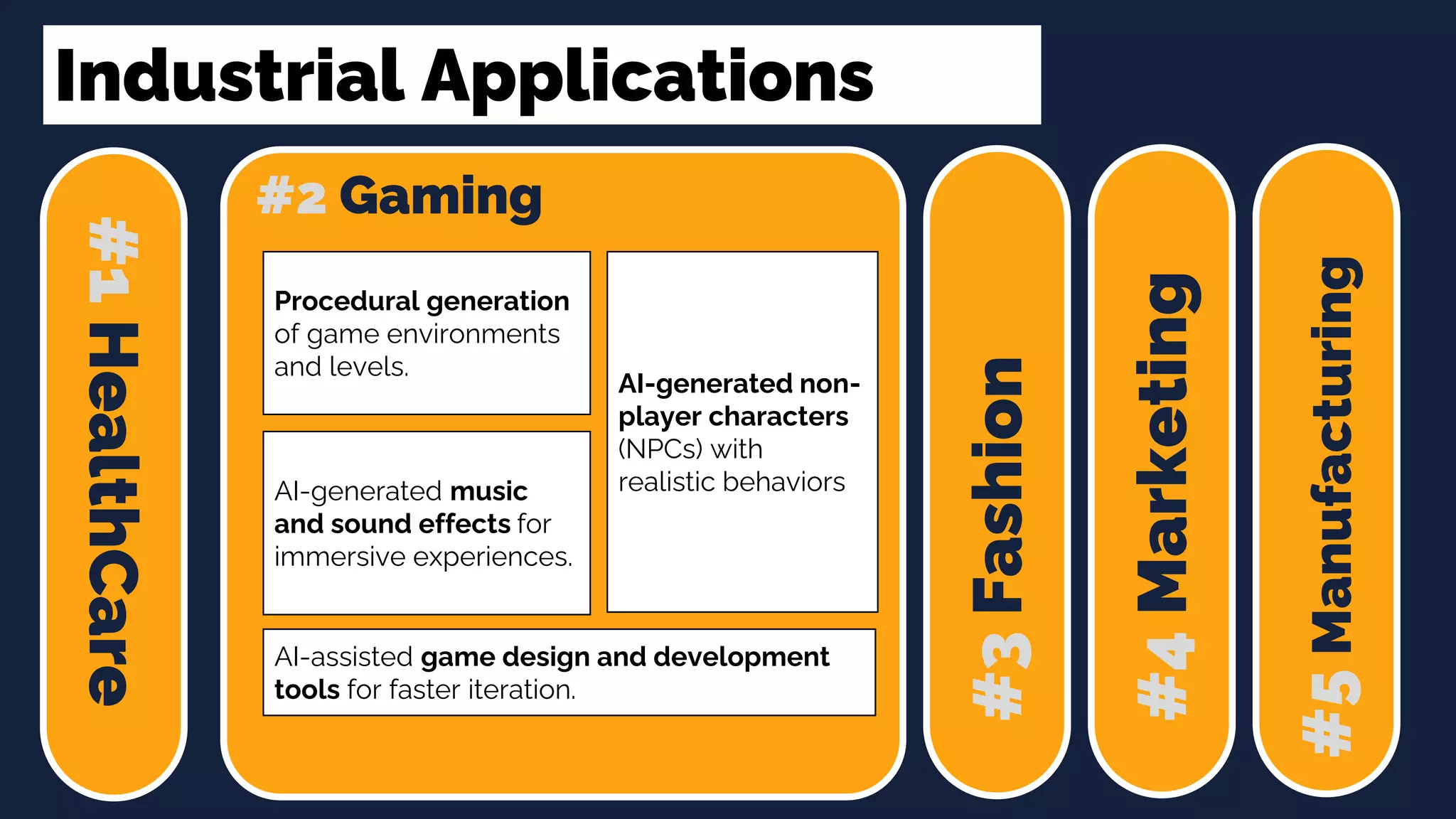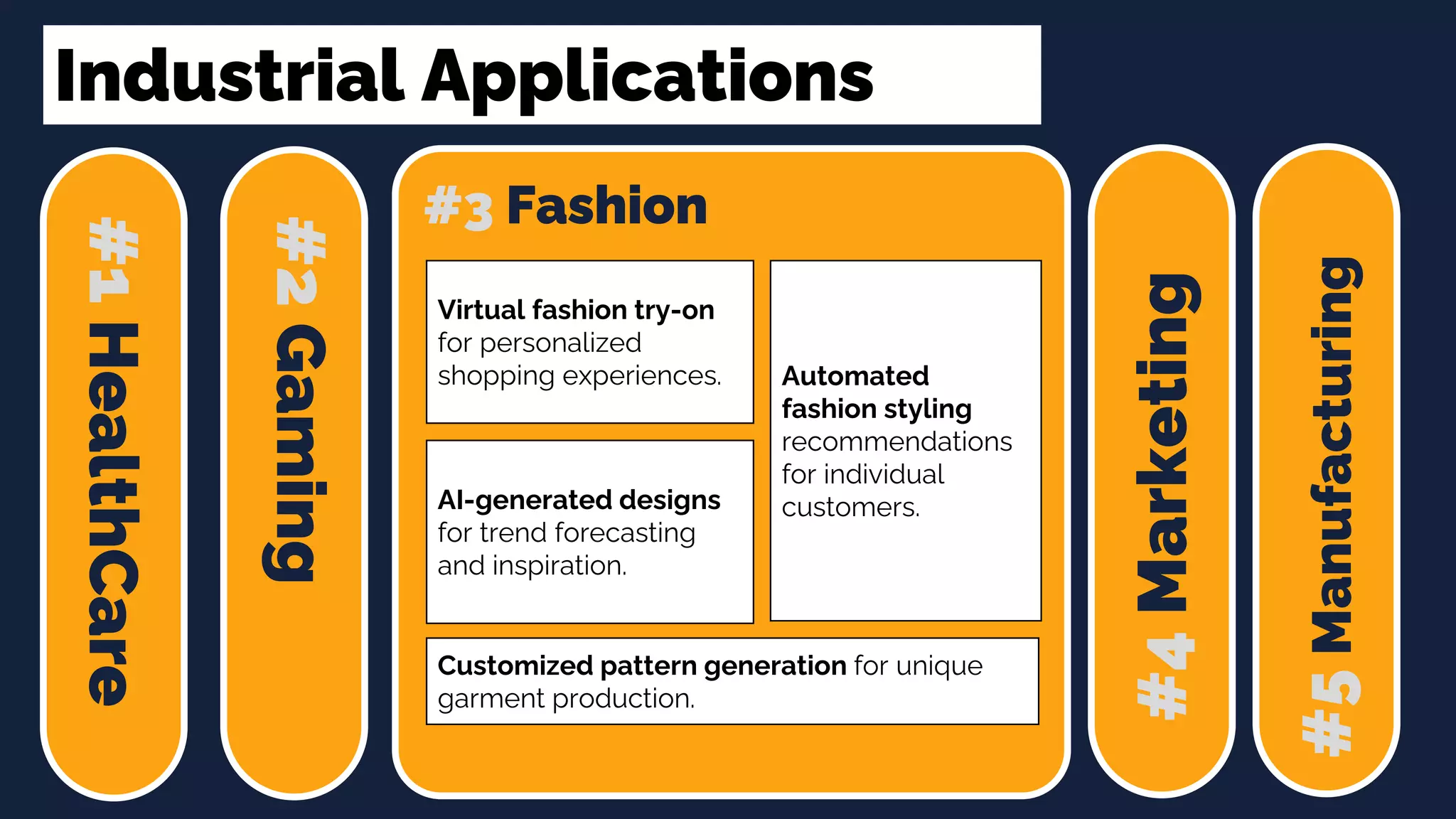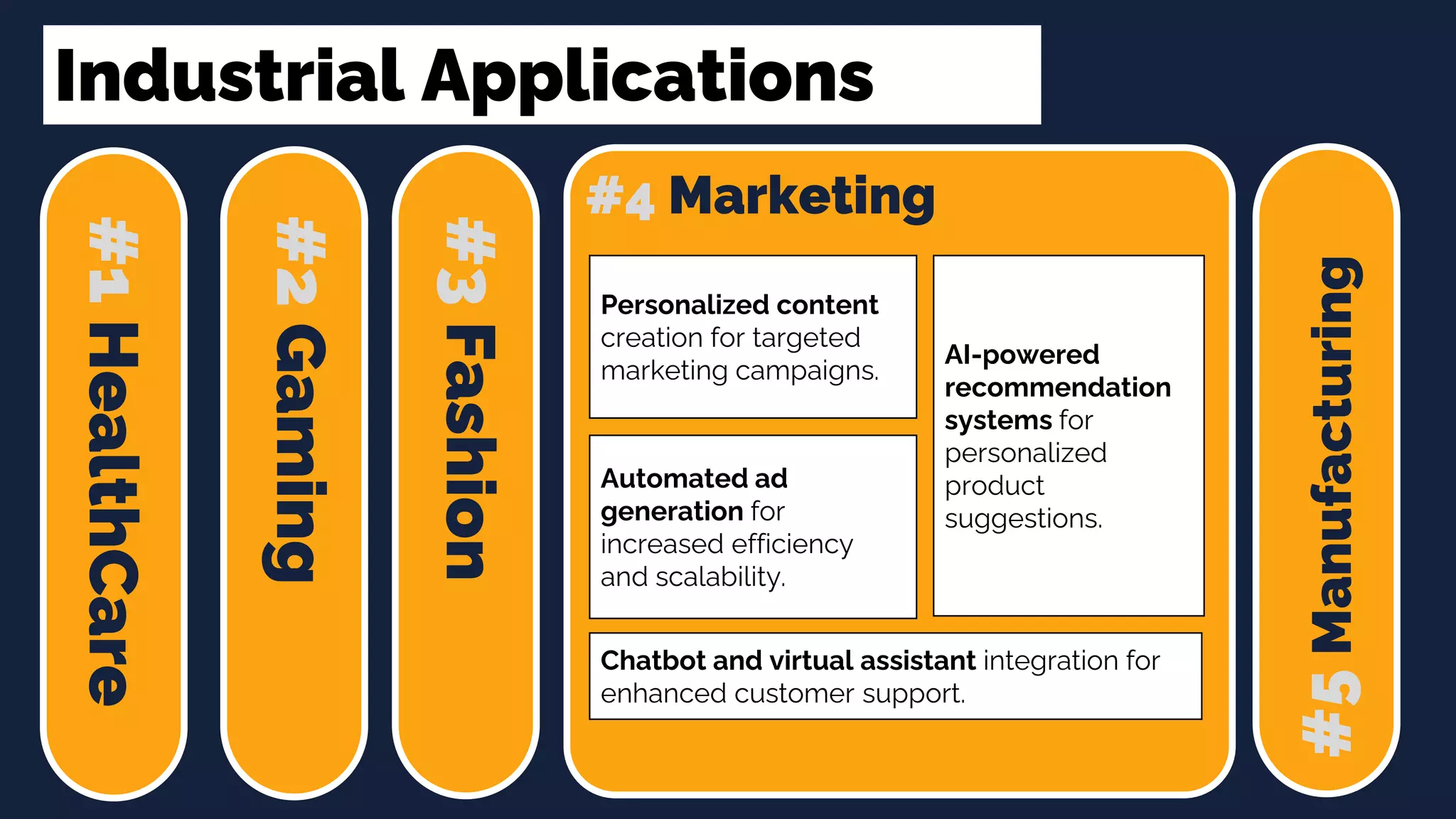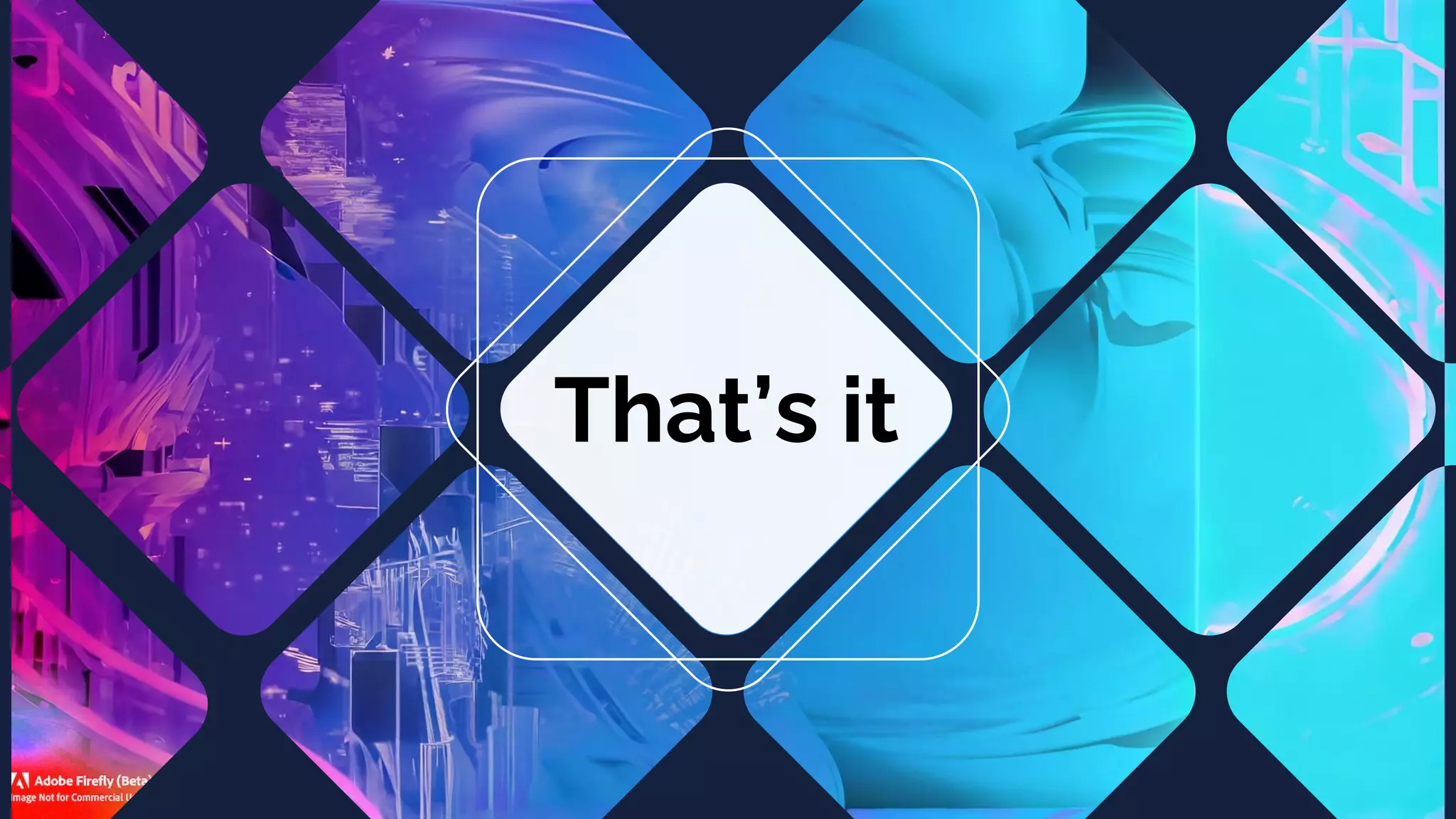The document explores generative AI, particularly the use of Generative Adversarial Networks (GANs), which involve competing algorithms to generate realistic data from random noise. It discusses various applications of GANs in industries such as healthcare, gaming, fashion, and marketing, detailing types of GANs and their operational mechanisms. Additionally, it highlights the potential of GANs in enhancing tasks like medical image synthesis, game design, virtual fashion try-ons, and process optimization in manufacturing.


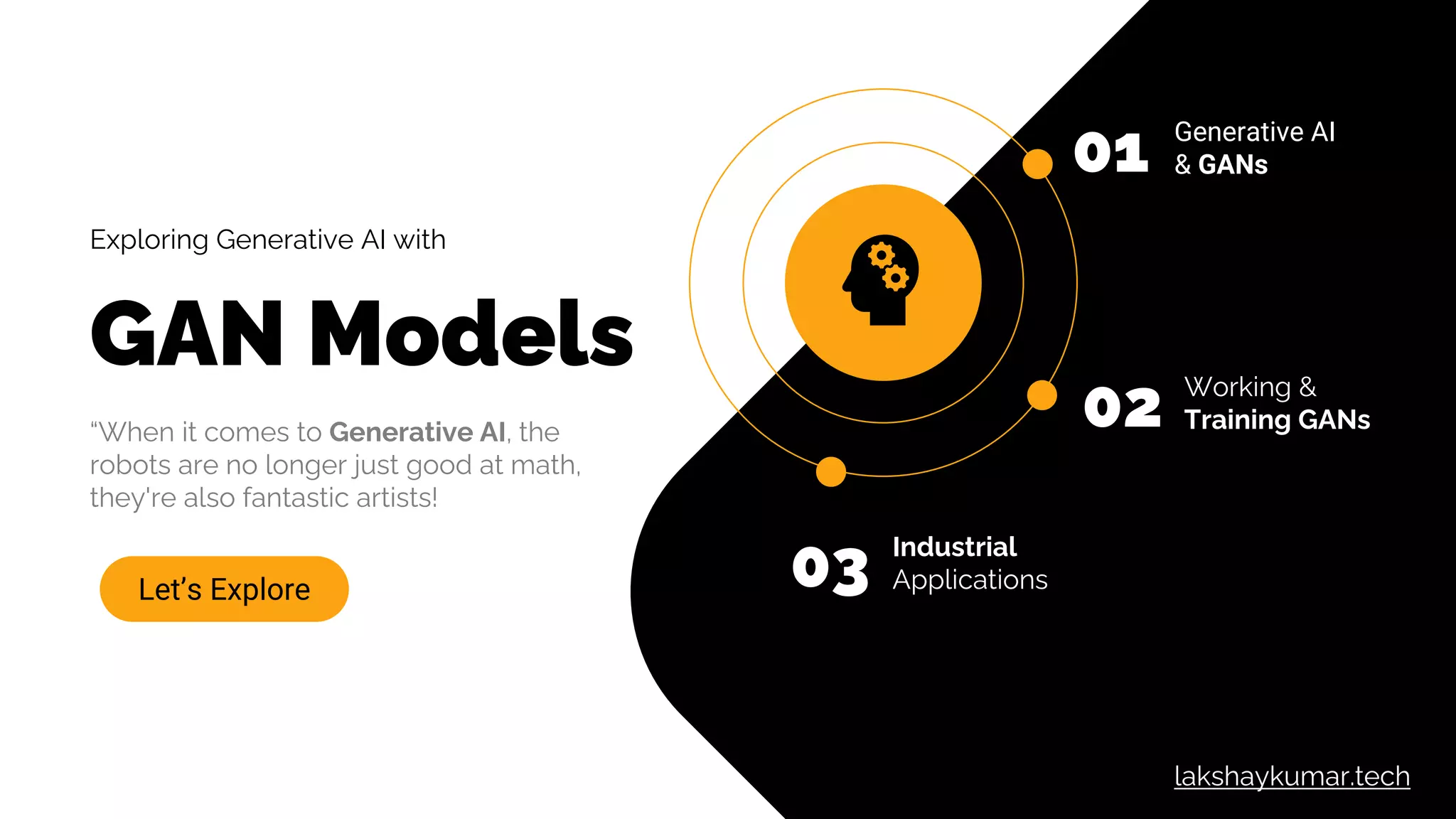
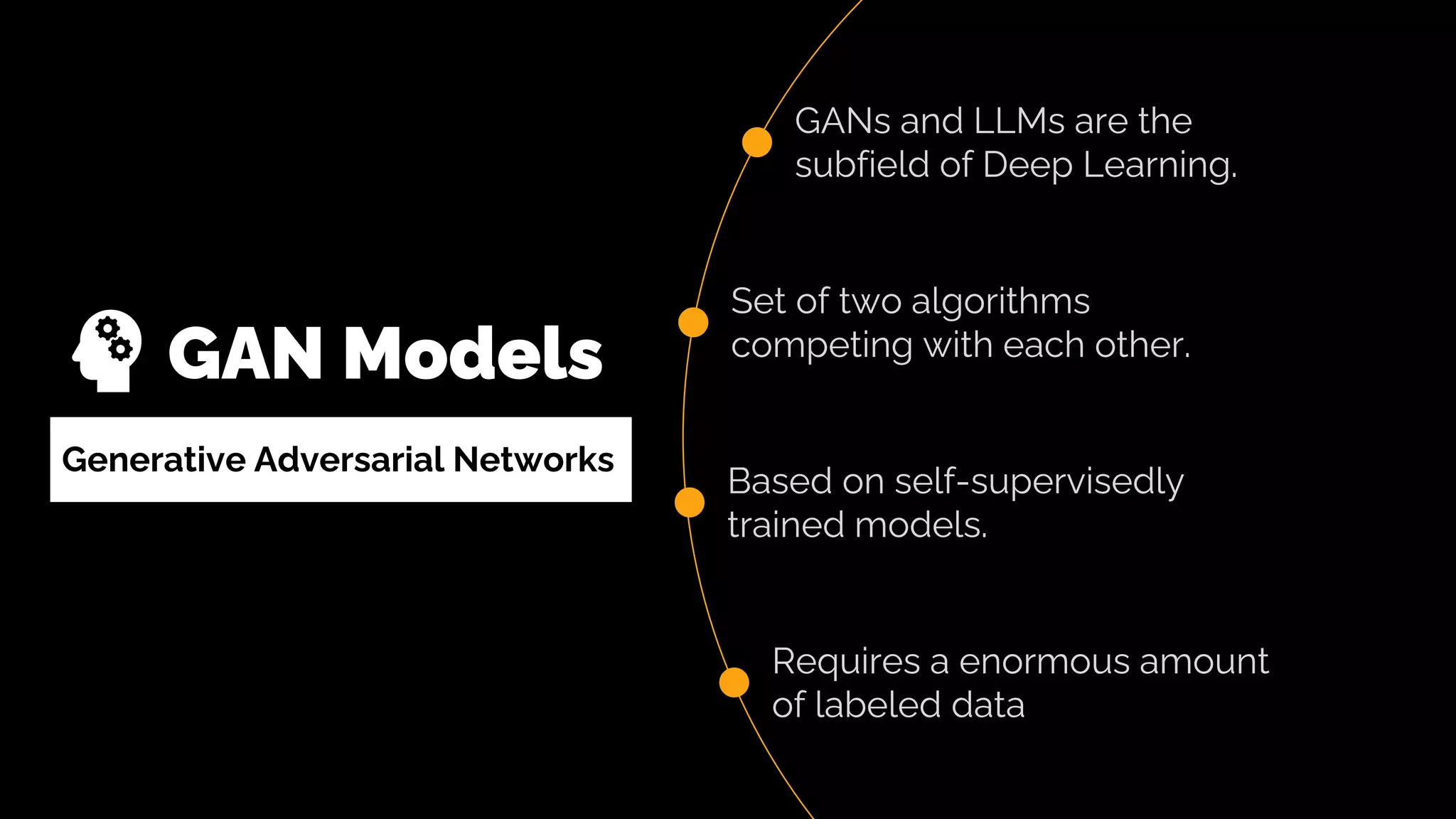
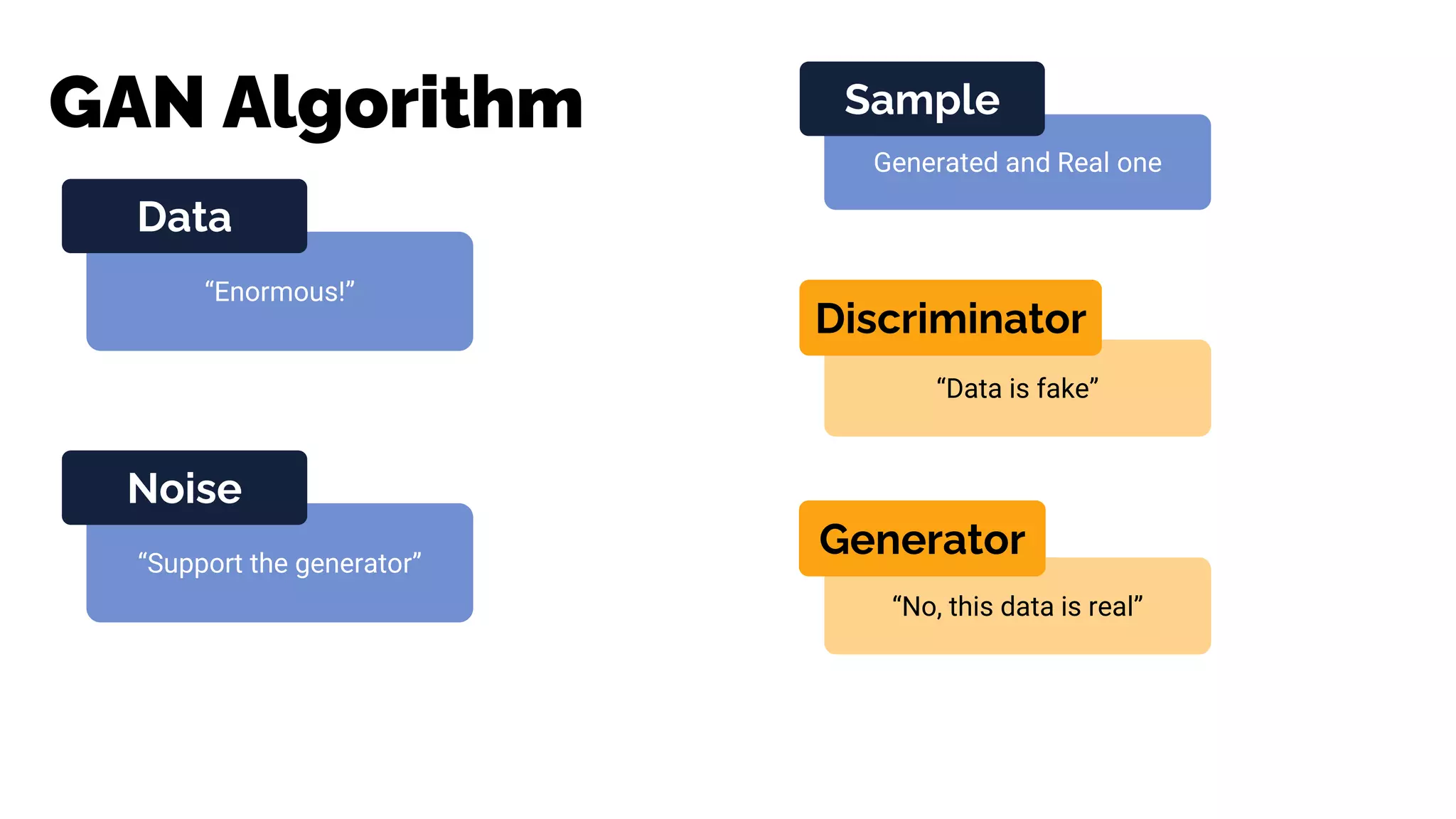

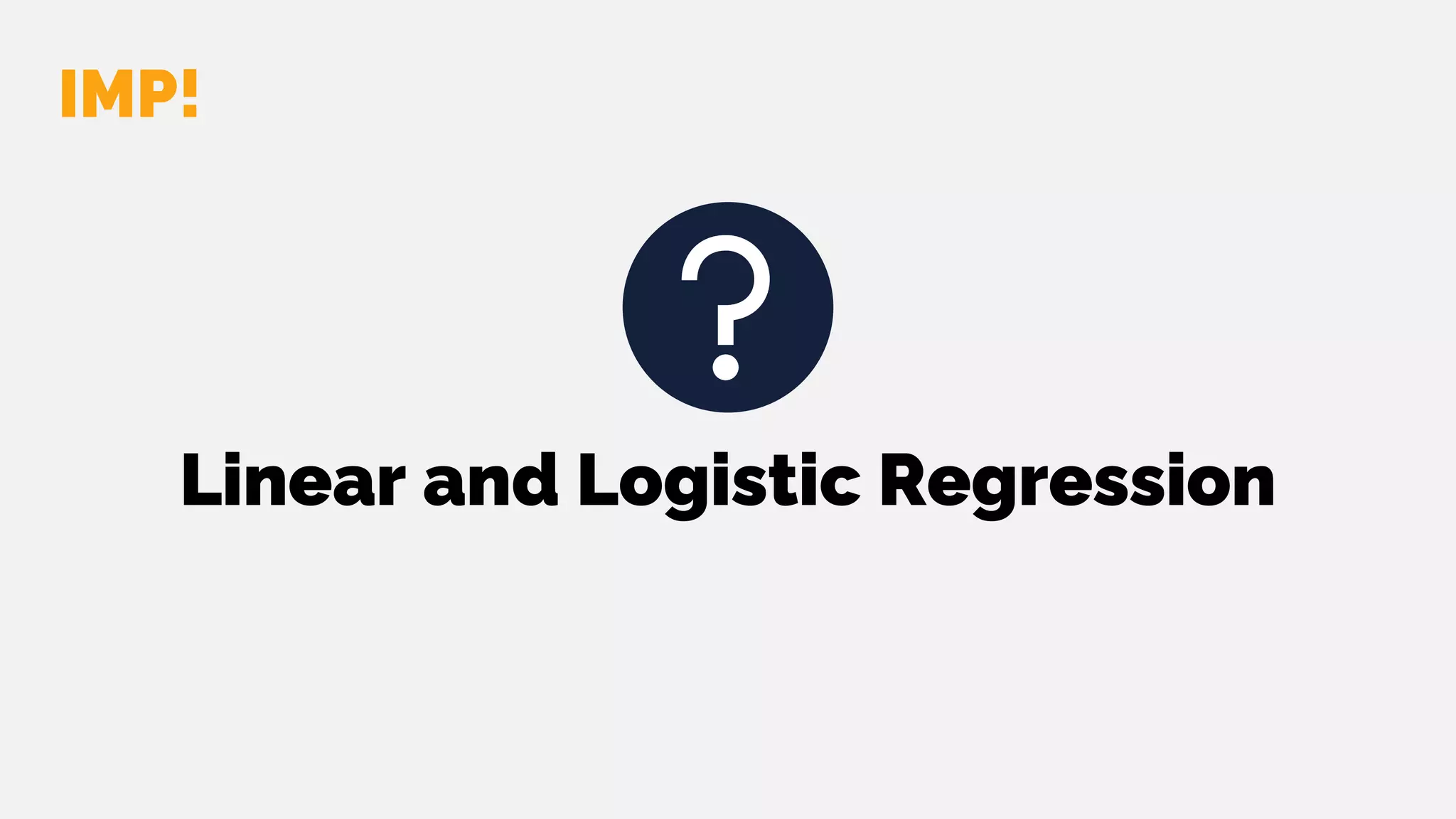
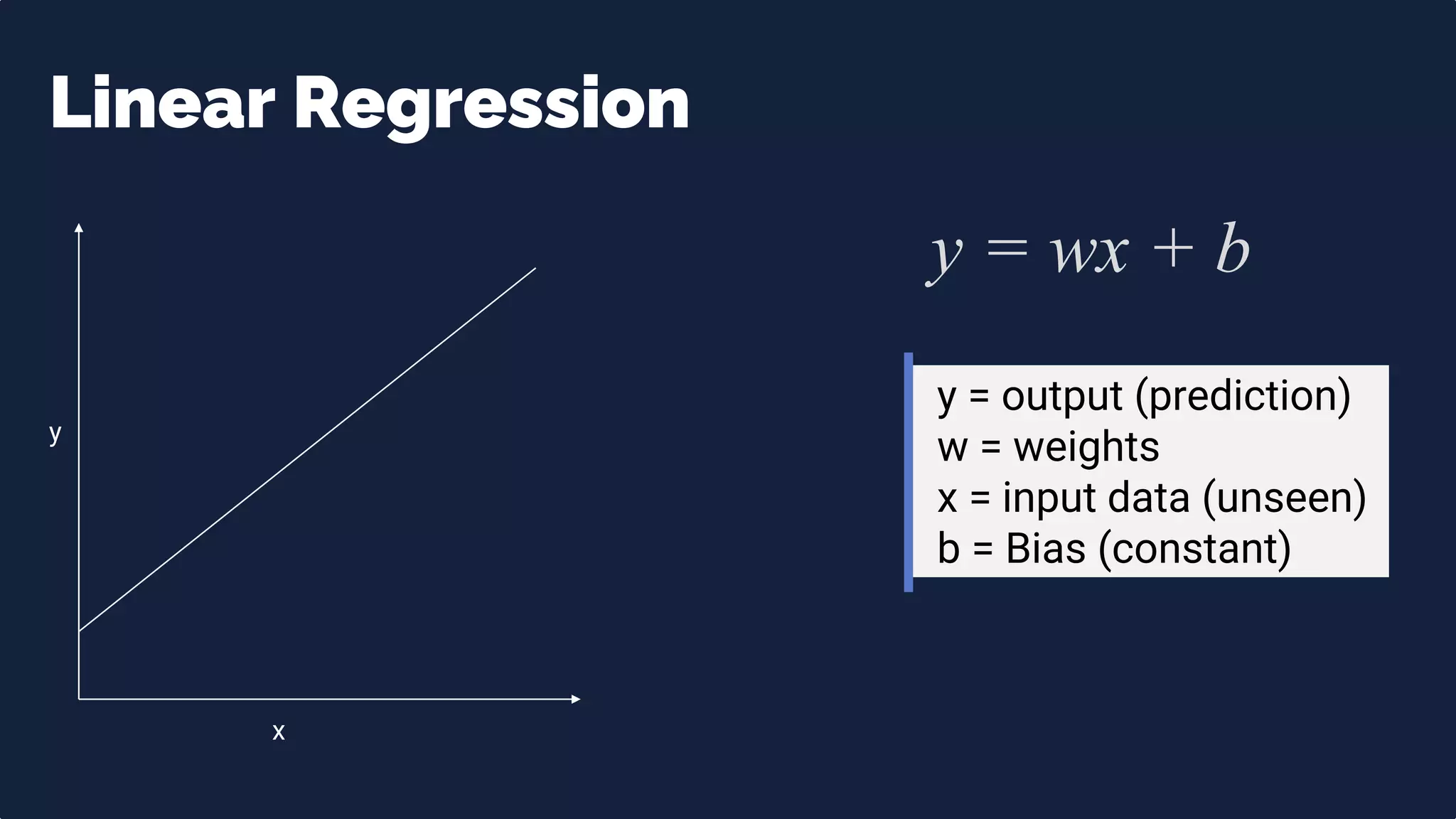
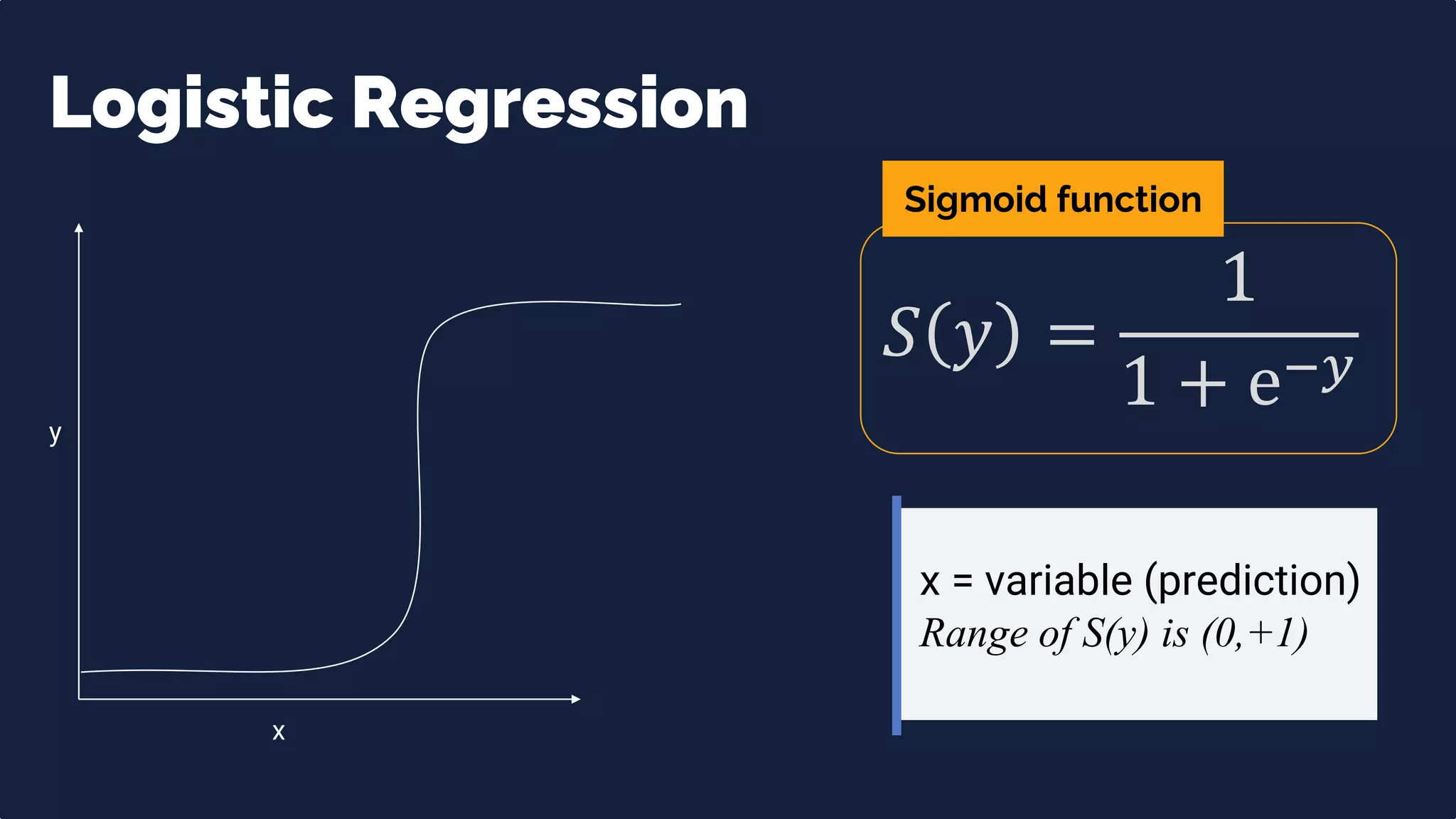
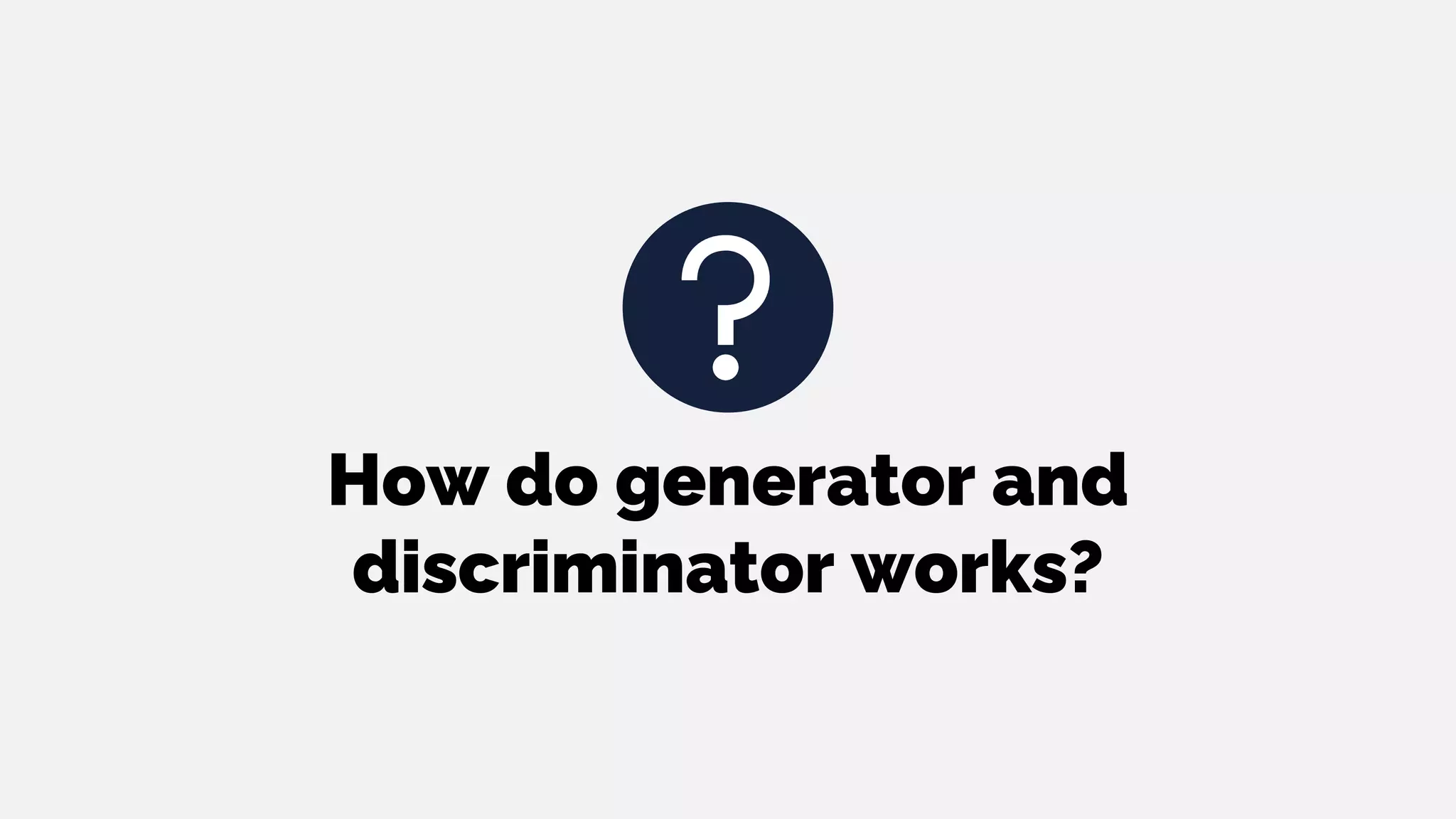
![1
2
3
4
GANs are Mathematically Represented by :
𝒎𝒊𝒏~𝑮, 𝒎𝒂𝒙~𝑫 𝑽 𝑫, 𝑮 = 𝑬𝒙~𝑷𝒅𝒂𝒕𝒂 𝒙
𝐥𝐨𝐠𝐃 𝐱 + 𝐄 𝐳~𝐩 𝐳
[𝐥𝐨𝐠(𝟏 − 𝐃 𝐆 𝐳 ]
Minimizing
Generator
Maximizing
Discriminator
Expectation value
over the probability
distribution of real
sample
Log of discriminator
output on real data
Expectation value
over the probability
distribution of random
noise
Log of compliment of
Discriminator output of
Generator from Random
Noise (z).
This makes sure that generator produces such a output that is difficult for
discriminator to catch](https://image.slidesharecdn.com/genrativeaiaiml-230603130118-ed7dc2fb/75/Exploring-Generative-AI-with-GAN-Models-11-2048.jpg)
![1
2
3
4
“This data is from real sample” - Discriminator
Generator
Generated
Sample
Real Sample
Discriminator
𝒎𝒊𝒏~𝑮, 𝒎𝒂𝒙~𝑫 𝑽 𝑫, 𝑮 = 𝑬𝒙~𝑷𝒅𝒂𝒕𝒂 𝒙
𝐥𝐨𝐠𝐃 𝐱 + 𝐄 𝐳~𝐩 𝐳
[𝐥𝐨𝐠(𝟏 − 𝐃 𝐆 𝐳 ]
Dominant Discriminator’s Loss function makes the generator’s learning difficult!](https://image.slidesharecdn.com/genrativeaiaiml-230603130118-ed7dc2fb/75/Exploring-Generative-AI-with-GAN-Models-12-2048.jpg)
![1
2
3
4
“No, I generated this data” - Generator
Generated
Sample
Generator
Discriminator
𝒎𝒊𝒏~𝑮, 𝒎𝒂𝒙~𝑫 𝑽 𝑫, 𝑮 = 𝑬𝒙~𝑷𝒅𝒂𝒕𝒂 𝒙
𝐥𝐨𝐠𝐃 𝐱 + 𝐄 𝐳~𝐩 𝐳
[𝐥𝐨𝐠(𝟏 − 𝐃 𝐆 𝐳 ]
Equilibrium balance where generator fools the discriminator](https://image.slidesharecdn.com/genrativeaiaiml-230603130118-ed7dc2fb/75/Exploring-Generative-AI-with-GAN-Models-13-2048.jpg)
